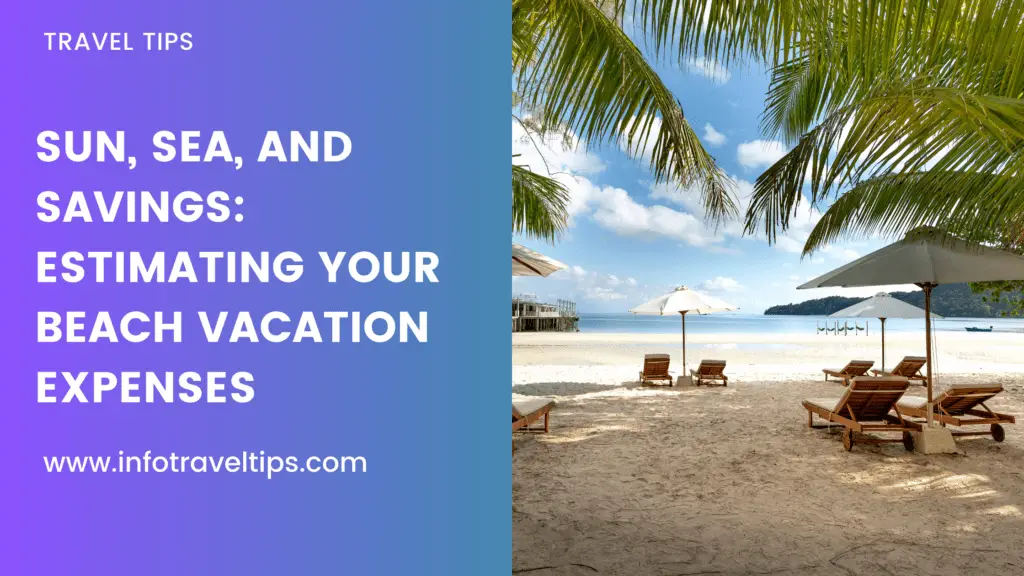Vacation with Disabled Family Members. Ensuring a smooth and enjoyable vacation experience when traveling with disabled family members requires thoughtful preparation. This guide offers a step-by-step approach to guarantee a hassle-free and memorable journey for all involved.
1. Vacation with Disabled Family Members Planning
1.1. Research Destinations
- Choose destinations known for being disability-friendly.
- Consult travel forums and websites dedicated to accessible travel for recommendations.
1.2. Set a Flexible Itinerary
- Allocate plenty of downtime to rest.
- Factor in extra time for transfers and sightseeing to accommodate different mobility speeds.
1.3. Book Accessible Accommodations
- Ensure hotels offer accessible rooms with necessary amenities (grab bars, wider doorways, roll-in showers).
- Confirm the hotel’s proximity to major attractions or transportation hubs.
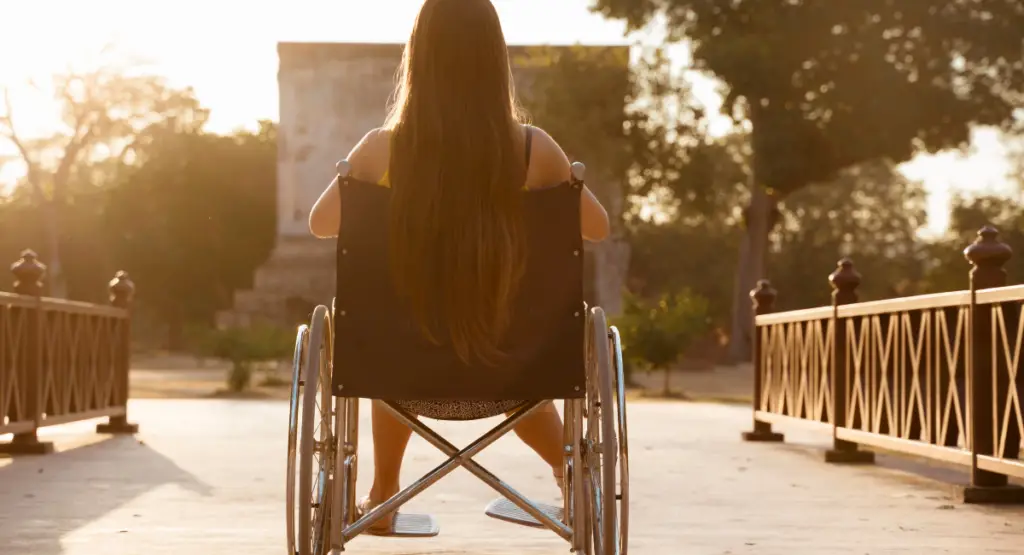
2. Transportation
2.1. Air Travel
- Inform airlines about specific needs in advance.
- Book direct flights when possible to minimize transit hassles.
- Request aisle chairs or assistance during boarding and disembarking.
2.2. Ground Transportation
- Reserve wheelchair-accessible vehicles or those suitable for people with limited mobility.
- Check the accessibility of public transportation, if considering its use.

3. Pack Smartly
3.1. Essential Medical Supplies
- Pack extra medication, along with a doctor’s prescription and a note explaining the necessity of the medications.
- Include spare parts for mobility aids, like extra wheelchair batteries or crutches.
3.2. Accessibility Tools
- Portable ramps, transfer boards, or specialized travel chairs can be invaluable.
- Consider packing a lightweight foldable wheelchair, even if the primary wheelchair is powered.
4. Sightseeing and Activities
4.1. Research Ahead
- Check if attractions have ramps, lifts, or other accessible features.
- Some places offer virtual reality (VR) experiences or interactive exhibits for those who can’t access certain areas.
4.2. Guided Tours
- Opt for specialized tours that cater to travelers with disabilities.
- Inform tour operators in advance about specific needs to ensure they’re equipped to assist.
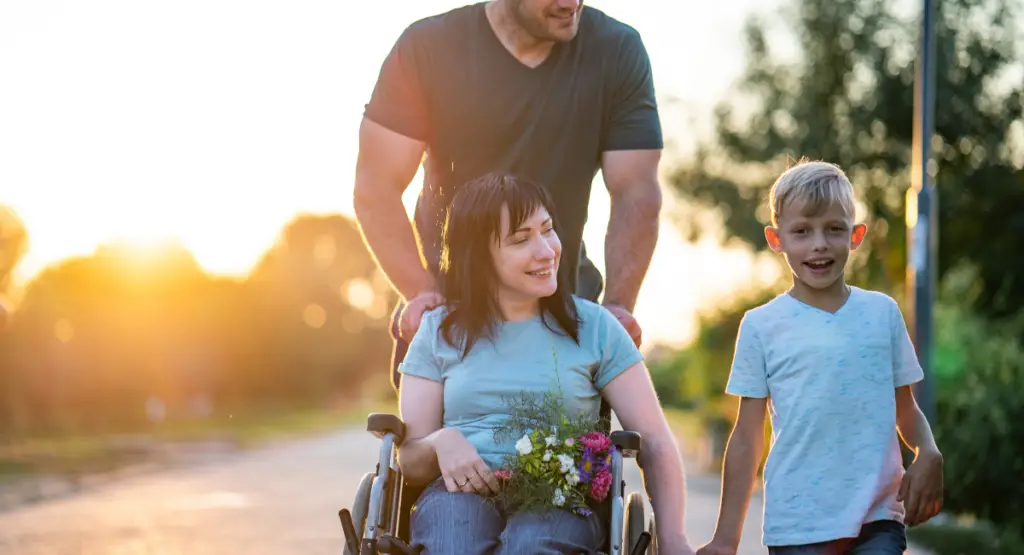
5. Dining Out
5.1. Restaurant Research
- Look for eateries with accessible entrances, restrooms, and seating arrangements.
- Call ahead to reserve suitable seating.
5.2. Dietary Restrictions
- If a family member has dietary requirements due to their condition, research restaurants that cater to these needs or communicate them clearly to the restaurant in advance.
6. Insurance and Health
6.1. Travel Insurance
- Get comprehensive travel insurance that covers potential medical emergencies or equipment damage.
6.2. Nearby Medical Facilities
- Know the locations of the nearest hospitals or medical facilities in your destination.
- Have a list of local pharmacies that might carry essential medications or supplies.

7. Stay Connected
7.1. Local SIM Card or Roaming
- Ensure you have a working phone to call for assistance if needed.
7.2. Useful Apps
- Download apps dedicated to accessible travel, which often have details on local amenities, services, and accessible routes.
8. Know Your Rights
8.1. Familiarize with Local Laws
- Numerous nations have regulations in place to safeguard the rights of individuals with disabilities. Knowing these can help advocate for services or accommodations you’re entitled to.
8.2. Air Travel Rights
- In many regions, airlines are obligated to assist passengers with disabilities. Be aware of these rights to ensure you receive the service you require.
9. Feedback and Community
9.1. Share Your Experience
- Review places regarding their accessibility to help other travelers in similar situations.
9.2. Connect with Others
- Join online forums or groups dedicated to accessible travel to get tips and advice from experienced travelers.
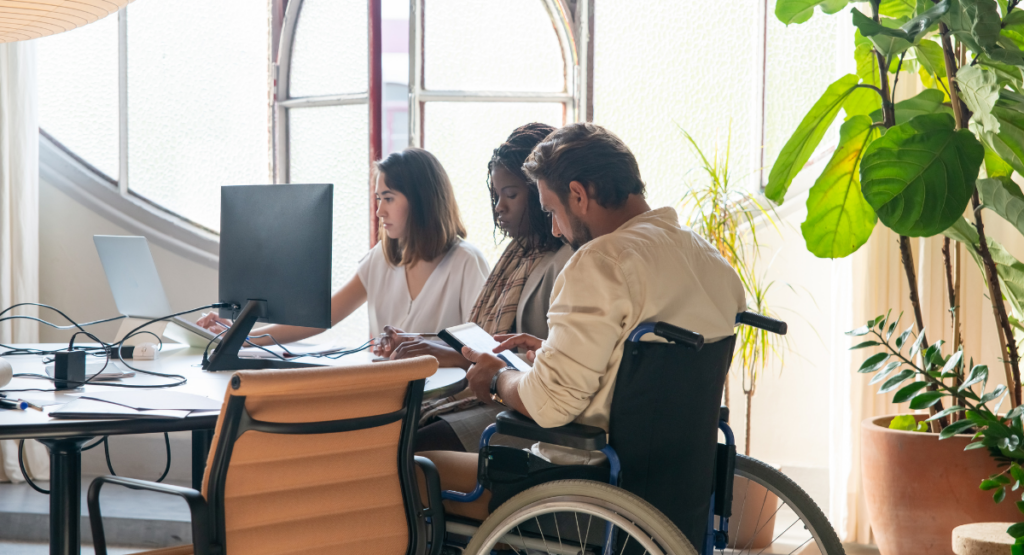
10. Communication
10.1. Language Preparedness
- If traveling to a country where English isn’t widely spoken, learn essential phrases related to disability and accessibility in the local language.
- Consider carrying a laminated card that explains, in the local language, specific needs or requirements.
10.2. Non-Verbal Communication Tools
- Picture-based communication boards can help bridge language barriers.
- Mobile translation apps can be useful in communicating specific requirements.
11. Accommodation Features
11.1. Safety First
- Ensure that the accommodation is equipped with safety features such as fire alarms with visual cues.
- Inquire about emergency evacuation procedures that cater to disabled guests.
11.2. On-site Facilities
- Opt for accommodations that provide on-site amenities like restaurants, spas, or recreational areas, reducing the need for frequent transfers.
12. Engage with Local Communities
12.1. Local Insights
- Locals can often provide insights about hidden gems that are disability-friendly.
- Engage with community centers or local organizations that cater to people with disabilities for recommendations and support.
12.2. Supportive Workshops & Events
- Some destinations might host workshops, classes, or events specifically designed for or inclusive of disabled participants, offering a unique and enriching experience.
13. Travel Companions & Caregivers
13.1. Hire Local Support
- In certain destinations, you might find services that provide caregivers or local guides trained to support travelers with disabilities.
13.2. Clear Communication
- Whether traveling with a personal caregiver, or family, or hiring local support, ensure everyone is clear about roles and responsibilities.
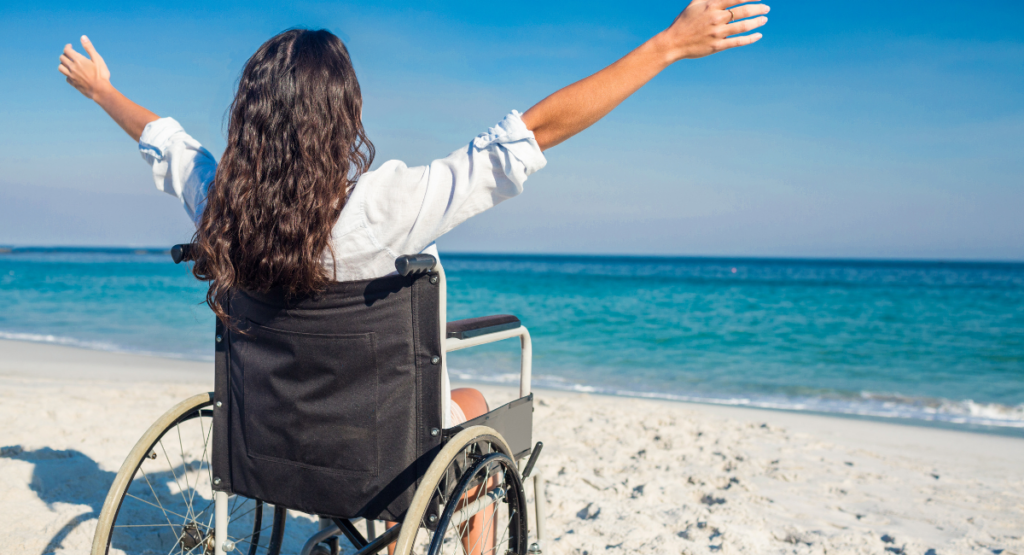
14. Packing Extras
14.1. Documentation
- Carry copies of all essential documents, including medical prescriptions, physician letters, and equipment manuals.
- Have digital backups stored securely, like in a cloud storage or a USB drive.
14.2. Comfort Items
- Items like pressure-relieving cushions or specific positioning aids can enhance comfort during long journeys or flights.
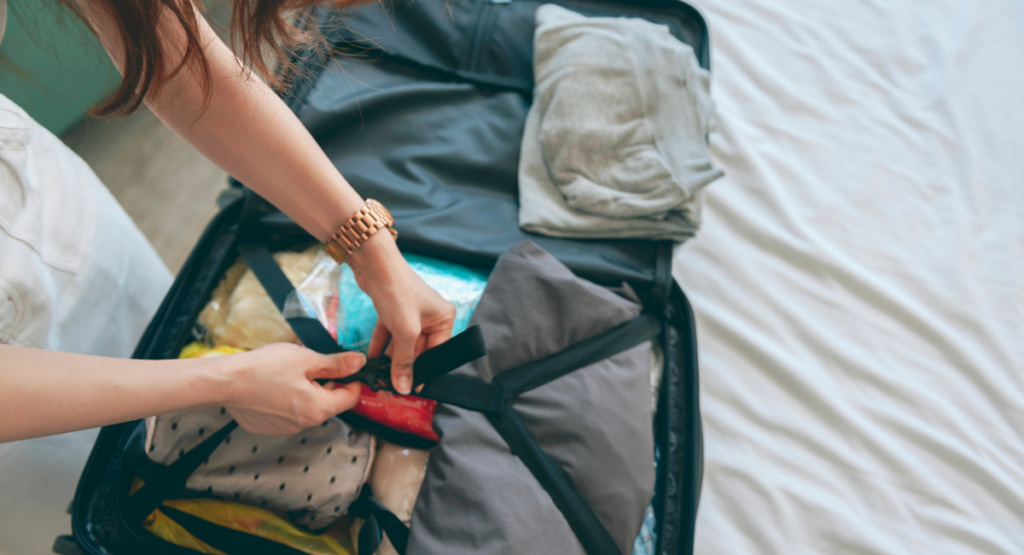
15. Stay Informed
15.1. Real-time Updates
- Sign up for notifications or use apps that provide real-time updates about local conditions, be it weather, traffic, or events.
15.2. Local Disability Organizations
- Connect with local disability advocacy groups or organizations. They can provide current information, resources, and assistance during your stay.
16. Planning for Downtime
16.1. Rest and Recuperation
- Schedule days where there’s no activity, allowing everyone to relax and recharge.
16.2. Accessible Recreation
- Find out about accessible leisure activities in the vicinity of your stay. It could be a nearby accessible beach, garden, or even a spa that offers specialized services.
17. Gearing Up for Adventures
17.1. Adaptive Adventure Equipment
- Many tourist spots now offer adaptive equipment for activities like snorkeling, diving, or hiking. Research in advance or contact local tour operators.
17.2. Specialized Adventure Tours
- Some agencies specifically cater to travelers with disabilities, offering adventures that are both thrilling and safe.
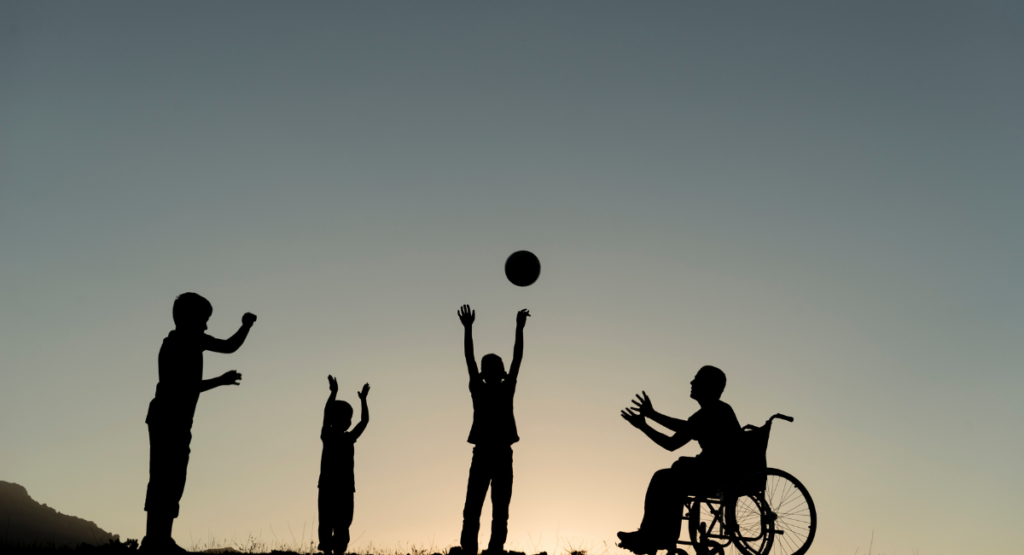
18. Cultural Etiquette
18.1. Respect Local Norms
- Every culture perceives disability differently. Familiarize yourself with local norms and etiquette to ensure respectful interactions.
18.2. Cultural Accessibility
- Museums, historical sites, and theaters in many places now have accessibility features such as audio guides, tactile tours, or sign language interpreters. It’s always good to inquire ahead.
19. Tech to the Rescue
19.1. Navigation Apps
- Use apps that focus on accessibility routes, pointing out ramps, elevators, and other essential features.
19.2. Accessibility Review Platforms
- Websites or apps where travelers with disabilities share their experiences can be a goldmine of information.
20. Empower Through Participation
20.1. Inclusive Activities
- Seek out activities where family members, regardless of their abilities, can participate together. This fosters a sense of unity and shared experience.
20.2. Learning & Workshops
- Opt for workshops, be it pottery, painting, or cooking, that accommodate and welcome individuals with disabilities.
21. Stay Energized
21.1. Dietary Needs
- If specific dietary requirements are linked to the disability, make a list of local dishes that are suitable and those that should be avoided.
21.2. Accessible Cafes & Rest Stops
- Plan routes that have accessible rest stops or cafes. A break can be energizing, and it’s essential to know where these stops can comfortably occur.
22. Handling Emergencies
22.1. Backup Plans
- Always have a ‘Plan B.’ If a chosen activity or destination turns out to be less accessible than anticipated, have an alternative in mind.
22.2. Local Support Lines
- Save local emergency numbers, including specialized services for people with disabilities if available.
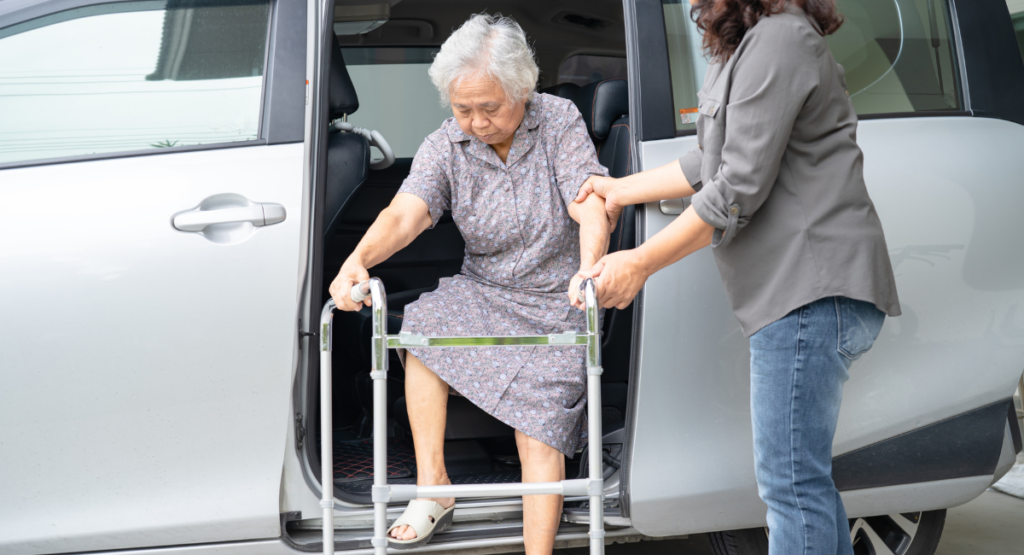
23. Budgeting and Finances
23.1. Financial Incentives
- Some places offer discounts or free entry for caregivers accompanying people with disabilities. Check-in advance and make the most of such incentives.
23.2. Unexpected Expenses
- Keep an extra budget for unforeseen expenses, such as specialized transportation or equipment rentals.
24. Building Memories
24.1. Documenting the Journey
- Maintain a travel journal or vlog. Not only does this document memories, but it can also serve as a guide for other families in similar situations.
24.2. Collect Feedback
- After the trip, sit together as a family and discuss what went well and what could have been better. This feedback is invaluable for future travels.
Conclusion
Journeying with disabled family members can be filled with joy, learning, and memorable experiences. The essence lies in thorough planning, empathy, and the willingness to adapt. The world is becoming more and more inclusive each day. With the right approach, even seemingly challenging trips can transform into heartwarming adventures. Remember, the journey itself is as enriching as the destination. Happy travels!


